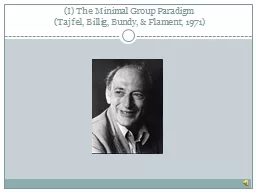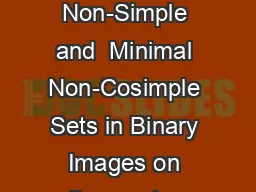PPT-(I) The Minimal Group Paradigm
Author : yoshiko-marsland | Published Date : 2018-10-07
Tajfel Billig Bundy amp Flament 1971 1 Social Categorization Phase Participants viewed a series of paintings by two artists Kandinsky and Klee They were
Presentation Embed Code
Download Presentation
Download Presentation The PPT/PDF document "(I) The Minimal Group Paradigm" is the property of its rightful owner. Permission is granted to download and print the materials on this website for personal, non-commercial use only, and to display it on your personal computer provided you do not modify the materials and that you retain all copyright notices contained in the materials. By downloading content from our website, you accept the terms of this agreement.
(I) The Minimal Group Paradigm: Transcript
Download Rules Of Document
"(I) The Minimal Group Paradigm"The content belongs to its owner. You may download and print it for personal use, without modification, and keep all copyright notices. By downloading, you agree to these terms.
Related Documents














